May 20, 2025 | 20:48 GMT +7
May 20, 2025 | 20:48 GMT +7
Hotline: 0913.378.918
May 20, 2025 | 20:48 GMT +7
Hotline: 0913.378.918
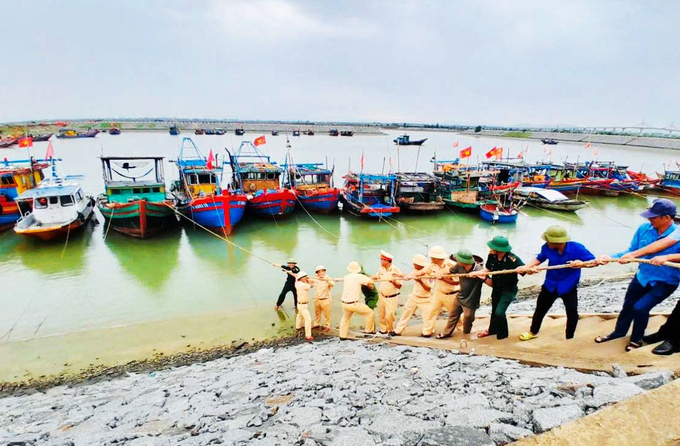
Disaster prevention forces, from central to local levels, worked tirelessly, arriving swiftly at the most vulnerable locations.
In the Mekong Delta, the local people refer to floods as sometimes gentle, at other times rising fiercely. The great storms remain in the memories of the elderly or in rare historical documents. One such memory is the catastrophic storm of 1904 which occurred over a century ago. Whenever old stories are told, people often sigh, "That was the year of the Dragon, when we saw all the storms and floods." Then there was Storm Linda at the end of 1997, which ravaged the lands of Ca Mau Peninsula. More recently, the flood of 2000 submerged vast fields.
Meanwhile, the North and Central regions constantly endure numerous storms each year, striking unpredictably and bringing heavy rains and floods. The dikes of the Red River, along with other dyke systems, were constructed over thousands of years. Yet the breaches in these dikes still haunt us today: “Everywhere, water surged, swirled into deep abysses, sweeping away houses, drowning rice fields.” The historic flood of 1971 claimed nearly six hundred lives and disrupted millions more. The gentle rivers, once laden with rich alluvium to nourish the fields, turned uncharacteristically violent.
In early September 2024, the entire nation anxiously turned its eyes to the beloved North, which was being battered by storms and floods. Typhoon Yagi, known locally as Storm No. 3, brought terrifying winds with unprecedented strength, impacting a vast area for an extended period. Coastal regions faced devastation; fishermen lost their livelihoods and assets at sea, and urban areas descended into chaos. Roofs of homes, offices, schools, and hospitals were torn off, while urban trees were uprooted. The storm tore through provinces of the Red River Delta, flooding rice fields and destroying crops. Gardens, tended to for many years, were written off as total losses.
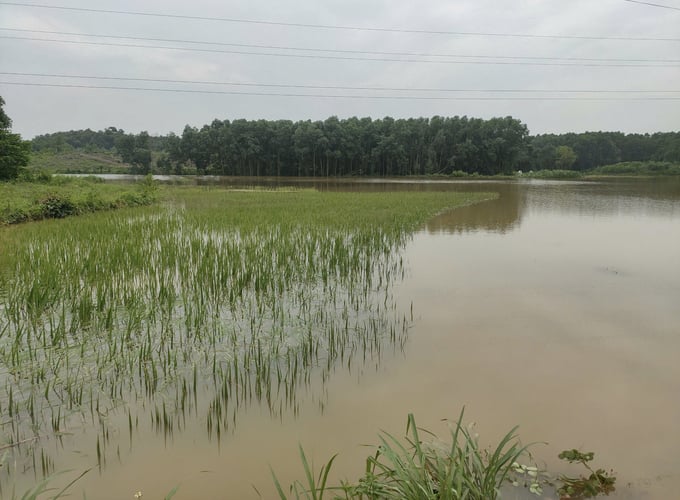
Typhoon Yagi impacted a vast area for an extended period. Photo: Thanh Tien.
The most severe damage came from the rains brought on by the post-storm system, with heavy intensity, spanning a wide area and persisting for many days. Most of the Red River Delta, along with the midlands and northern mountainous regions, was submerged in water. These areas, characterized by low population density and isolated terrain, became even more cut off by the impact of extreme natural disasters. Water overflowed the riverbanks, and houses were gradually swallowed by the rising floodwaters. Dams approached their alarm limits, with authorities tensely monitoring the water levels minute by minute, hour by hour, preparing for unprecedented emergencies.
The majestic, rolling mountain ranges, once solid and enduring, became fragile and perilous due to landslides and subsidence. Many winding roads, flanked by terraced fields, were deformed and torn apart. Rivers and streams, once scenic stops for tourists, turned into torrents of flash floods. The clear blue dams that once stood serenely in the wilderness now ran red with the muddy, rushing waters. Everything turned desolate in an instant; nature itself seemed enraged, collapsing all at once as multiple unfavorable factors converged.
In response, disaster prevention forces, from central to local levels, worked tirelessly, arriving swiftly at the most vulnerable locations. Military forces, police, and militia waded through relentless rain and rising waters to deliver food and supplies and evacuate people to safety. Hundreds of thousands of determined individuals clung to the dikes, working day and night to prevent disaster. Their united mission was clear: the safety of the people above all else.
In many storm-stricken areas, residents said they had never witnessed such a terrible storm, flood, or disaster in their lifetimes. Water levels rose to heights unseen for decades. No one had anticipated it, no one had prepared for it, and no one could have imagined the scale of devastation. Despite global warnings about natural disasters and the extreme weather linked to climate change, Typhoon Yagi’s destruction exceeded all expectations, with its aftermath lingering for days and leaving devastation beyond what anyone had foreseen.

Hundreds of thousands of determined individuals clung to the dikes, working day and night to prevent disaster.
Advanced technology is continuously evolving, enhancing our ability to forecast and manage natural disaster risks while providing earlier, more proactive, and flexible response strategies. Combining scientific advancements with indigenous knowledge – such as the quick judgment of village chiefs and community experience in disaster response – can empower people in isolated areas to act more effectively.
Cultural identity and indigenous knowledge, passed down through generations, alongside the spirit of community solidarity, perseverance, and resilience, guided by village elders and chiefs, are invaluable in strengthening the community’s capacity to respond to and recover from natural disasters.
While humans cannot “patch the sky with stones” and no solution can entirely eliminate the damage from natural disasters, we can significantly reduce it by adopting a proactive approach: “From response to early action and strengthening resilience.”
Act early, when data and disaster bulletins are updated clearly and promptly, utilizing interdisciplinary thinking to enhance forecasting accuracy, and tailoring warning content to local and regional specifics. Act early, when researching and investing in resilient infrastructure such as dams, dykes, and resettlement areas that can withstand various natural disasters and impacts. Act early, when integrating economic, environmental, and social factors in development to ensure river basins are protected and flood escape corridors remain unobstructed. Act early, when refining policies and bolstering the disaster response capacity of both prevention forces and the community.
“The storm tilted at night. The tree branches broke and leaves flew away... The storm has long since stopped. The trees are green again…”
Ships and boats will set sail once more, navigating the sea day and night. The sun will rise, flowers will bloom, and the sound of the panpipe will once again echo through the highlands!
Translated by Quynh Chi
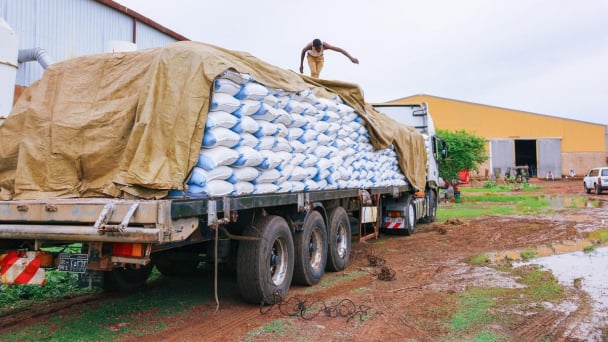
(VAN) In 2024, over 295 million people across 53 countries and territories faced acute hunger—an increase of almost 14 million people compared to 2023, while the number of people facing catastrophic levels of hunger reached a record high.
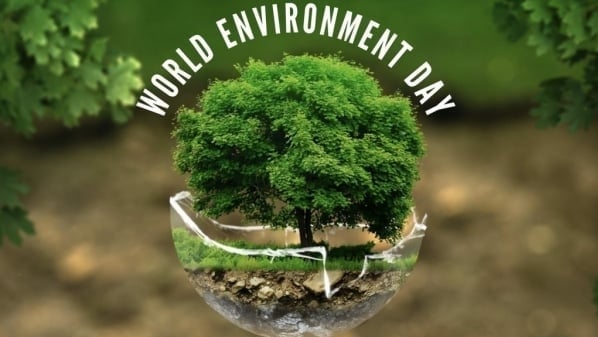
(VAN) World Environment Day 2025 (June 5) carries the theme 'Beat Plastic Pollution' continuing to emphasize the global urgency of addressing the plastic waste crisis.
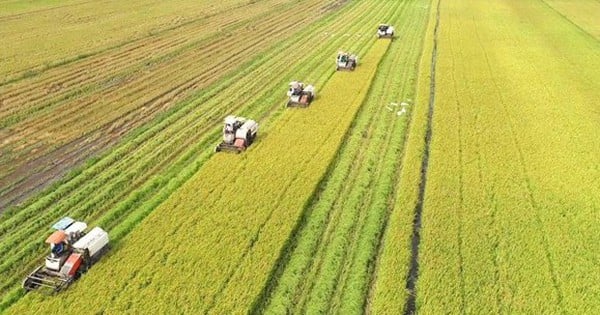
(VAN) This was the assessment shared by experts at the workshop titled 'Assessing the Role and Potential of Low-Emission Rice Production Systems in Vietnam,' held on the morning of May 19.

(VAN) Cai Rong Port is the fisheries control center of Quang Ninh, helping to monitor fishing vessels, combat IUU fishing, and remove the EC's 'yellow card'.

(VAN) The German Agricultural Society (DLG) explores the possibility of establishing a mechanization service center in Vietnam’s Mekong Delta to support farmers in accessing and utilizing advanced machinery.

(VAN) On May 16, the Department of Water Resources Management, in collaboration with the Food and Agriculture Organization of the United Nations (FAO), held a signing ceremony for the GEF-8 project document.

(VAN) Food safety, mechanization, vocational training, and market opening are key areas of cooperation expected between the Vietnamese Government and the Federal Republic of Germany.